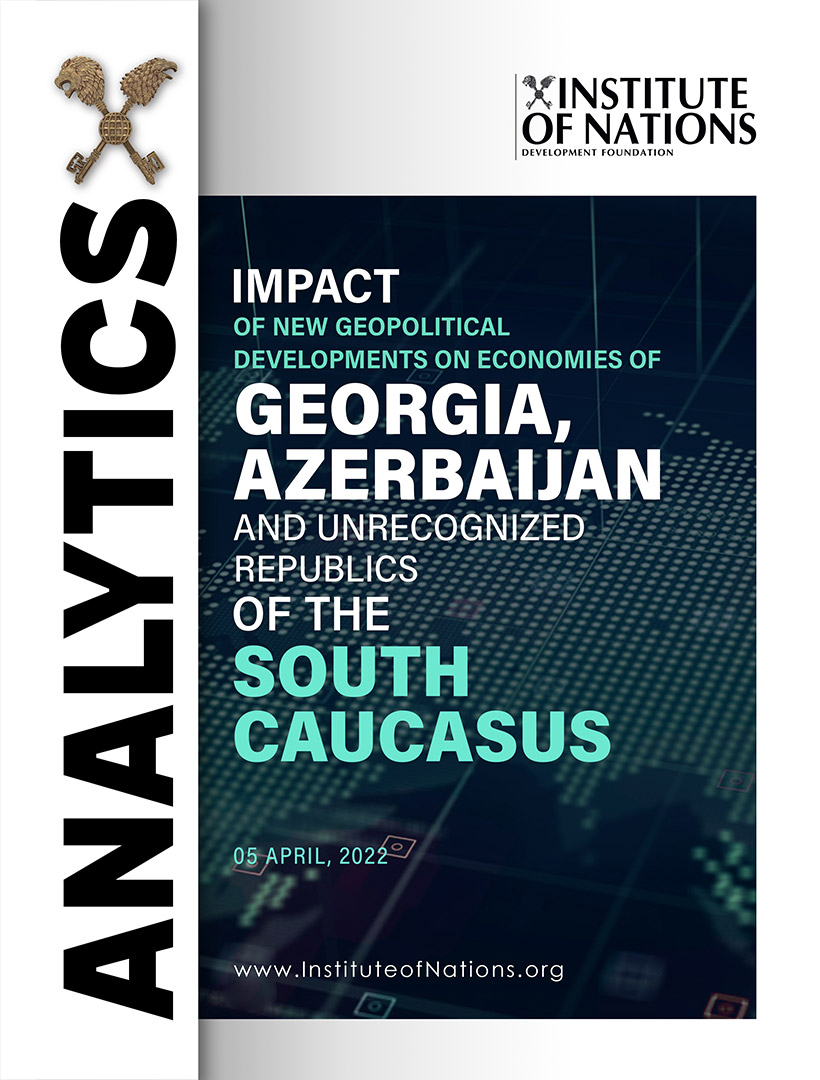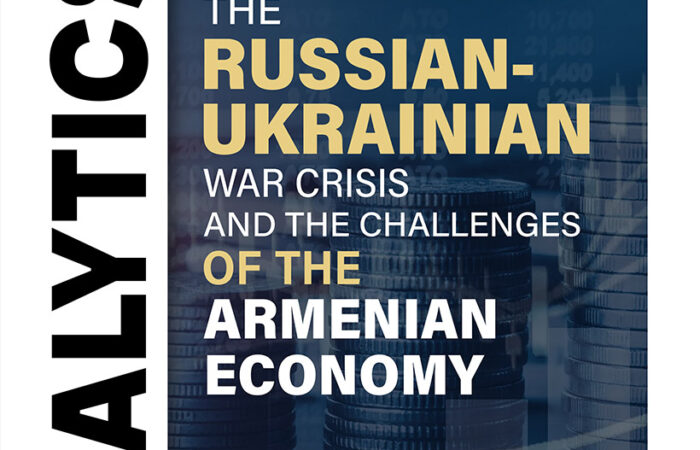Russia-Ukraine confrontation may have both negative and positive after-effect on economies of the South Caucasus countries in near future. Economic sanctions imposed by the West on Georgia, which has a large share of exports to Russia, may limit the opportunities for bilateral trade turnover. In the event of limited financial resources for the two unrecognized republics of the South Caucasus, Abkhazia and South Ossetia, which have been severely sanctioned by Russia, can expect less support. At the same time, Azerbaijan may be one of the winners of the Russia-Ukraine conundrum, as prices for energy have risen in the world market as a result of the conflict, and they are of vital importance for the formation of Azerbaijan’s state budget.
Thus, due to sanctions imposed on Russia in 2022 issues may emerge in Georgia linked to the export of local products. In 2021 Georgia’s entire trade turnover with Russia comprised USD 1 billion 638 million and with this index Russia was Georgia’s second trade partner.
In recent years export from Georgia to Russia grows constantly and 2021 was not an exception in this sense—export grew by 38.3%, and import by 15.8%. In 2021 107,4 thousand tons of mineral and spring water was exported from Georgia to the Russian Federation, up to 105 thousand tons of ferroalloy, 38.4 thousand tons of natural grape wine and 25 thousand tons of fruits and other products with the total cost of USD 610 million dollars.
Russia remains Georgia’s largest grain supplier. In 2021 337.7 thousand tons of wheat, 319.2 thousand tons of oil gas, 224.7 thousand tons of oil and oil products, about 28.4 thousand tons of sunflower seed and other products with the total cost of USD 28 million was imported from the Russian Federation.
Export dependence of Georgian wine on Russian market is higher. In 2021 export volume of Georgian wine increased by 13.8%. More than 420 Georgian companies involved in this field have supplied more than 100 million bottles to foreign markets, with the total cost of USD 239 million, which is more by 5.6%, than in 2020. However, if in 2013 Russia shared 44% of total export of wine from Georgia to Russia, then in 2021 that index reached 55%.
Weakening of Russian currency and decline in purchasing power in this case may reduce consumption of Georgian wines in the Russian Federation, and it’s a significant blow to Georgia’s agriculture and processing industry. Loss of the Ukrainian market is also problematic for Georgian winemakers, as it is one of the largest consumers of Georgian wines after Russia. However, the most encouraging thing for Georgian winemakers is the fact that exports to Great Britain and USA has considerably increased, and that Georgian winemakers have entered new Western markets, including Canada, Czech Republic and Sweden. In recent years, China is also a largest consumer of Georgian wine.
Sanctions imposed on the Russian Federation may reduce visits of Russian tourists to Georgia. In recent years, Russians were ranked the second after Turks regarding tourist visits. In this case Georgia may also have serious financial losses and lose jobs (10% of country’s workforce is employed in the tourism sector.
Economic sanctions imposed on Russia also had a negative impact on Georgian currency—lari, which has lost around 7% of its value against US dollar since Russia-Ukraine war. The lari exchange rate could have fallen even more, but recovered and stabilized after the Central Bank of Georgia sold a significant foreign currency to support the national currency on March 9.
As a result of Russia-Ukraine war rather hard times are anticipated for regions separated from Georgia, South Ossetia and Abkhazia, financial assistance allotted to which by Russia was decreasing yet before the start of recent war in Ukraine. On March 10 Dmitry Volvach, Deputy Minister of Economy of Russia, stated that Moscow in future plans to reduce their financial assistance to help those territories to “realize their potential”. This can generate significant difficulties, especially for Abkhazia, which is experiencing new waves of energy crisis, which can be mitigated only by importing electricity from Russia, which requires additional funding.
Perhaps the only state to gain economic benefit in the South Caucasus as a result of Russia-Ukraine war may be Azerbaijan, great share of export of which comprise oil products. If current limits on oil and gas prices in the world market are maintained in 2022, Azerbaijan can generate large additional revenues, which can reach several billion dollars a year.
Oil and natural gas bring about 83% of Azerbaijan’s export revenues and finance about 60% of the government budget. They also supply 98% of the primary energy, more than 90% of the country’s electricity.
Economic sanctions imposed by the West on the Russian Federation, which include gradual renunciation of Russian gas, can provide a favorable financial situation for Azerbaijan. Baku is already preparing to increase volumes of gas supply to the EU to the best of its ability help Europe get rid of Russian gas. The European Union has high hopes, in particular, for additional gas supplies to Italy, Greece and Bulgaria through the TAP gas pipeline, which started on December 31, 2020. At present, the capacity of TAP is equivalent to 10 billion cubic meters of gas per year, which can be delivered to Western Europe through Greece, through Albania, through the second stage of its development. In this case, the capacity of TAP gas pipeline can be doubled to 20 billion cubic meters.
In 2021 gas export from Azerbaijan comprised 18.9 billion cubic meters, compared to 2020 increasing by 39.8%.
In 2022 Azerbaijan is planning to export approximately 19 billion cubic meters of gas, 8 billion cubic meters of which will be exported to Turkey, and 7 million to Italy.
The rest of the gas will be distributed between Georgia, Bulgaria and Greece. Increasing gas export volumes, under present price rates, in addition to additional oil revenues in 2022, could provide Azerbaijan with significant cash inflows.





